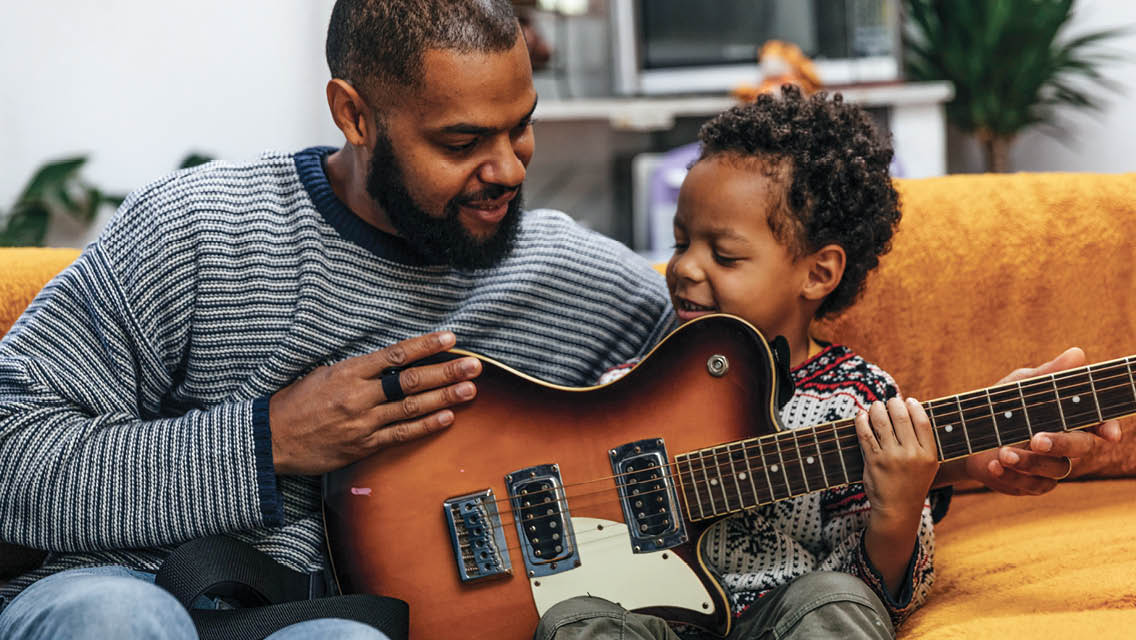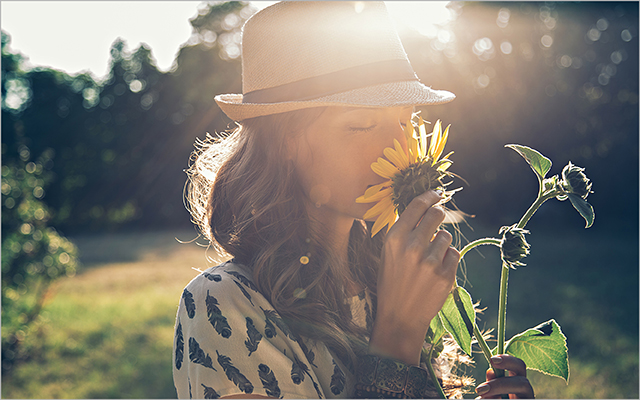When Melita Belgrave, PhD, first saw the 2007 documentary Young@Heart, about a chorus of senior citizens from Massachusetts, she felt inspired. An associate professor of music therapy at Arizona State University, Belgrave was already well acquainted with the healing power of song. But seeing the film motivated her to create an intergenerational rock ensemble of her own.
Soon, her new group was performing classic and contemporary tunes at a local senior center. Ensemble college students studying music therapy learned alongside older adults, each generation relying on the other to clue them in on songs they didn’t know.
Nobody knew their fellow singers when the ensemble first gathered, but when it came time for a concert, everyone’s families came together to appreciate the music. Months later, when one of the students was hospitalized, an older adult from the choir was among the most frequent visitors. “I check on people,” he told Belgrave.
The sense of community formed within this group of unlikely bandmates is emblematic of what Henry Wadsworth Longfellow wrote about music: It’s “the universal language.”
According to research by Harvard’s Music Lab, although music varies tremendously across cultures, styles of song performed around the globe by people from different communities share some similar qualities related to their social function — lullabies soothe, hymns inspire, dance tunes make us want to boogie. “It’s part of almost every culture,” says Belgrave. “Almost everyone has a response to music.”
Music also provides a variety of health benefits. Engaging in musical experiences can improve mood, reduce stress, ease pain, and even strengthen memory. Songs we’ve heard at pivotal moments in our lives transport us back to that time. Even people facing severe effects from Alzheimer’s disease or traumatic brain injury often respond when they hear their favorite tunes.
“It’s almost like a little file cabinet: Music brings us back, not just to the time, but the feelings that are there,” says Mariagracia Rivas Berger, MT-BC, a music therapist at Children’s National Hospital in Washington, D.C.
Music is one of the rare activities that stimulate both hemispheres of the brain, building neural pathways and allowing us to see the world in a different way. “Music primes the nervous system and influences our overall health and well-being,” explains Melissa Hughes, PhD, coauthor of Natural Harmony: An Instrumental Guide to Blending Outdoor Music and Community. “In a community setting where people are sharing the experience, they’re syncing up their brains in a positive way.”
Bottom line: Music improves individual well-being and brings us together in shared experience. One study of ensemble singing found that, even in large groups of strangers, singing together increased feelings of social cohesion. And no matter your level of skill or experience, you can enjoy the benefits of music, including connection with community.
“Music making can be made accessible to everyone,” Belgrave says. “Even if you think you’re tone deaf, there are lots of rhythm instruments that don’t require you to be in tune.”
Here are a few ways to get started.
Show up.
Anyone can be an audience member. Check your community calendars for upcoming concerts, musicals, and other performances. Open-air festivals let you enjoy tunes while experiencing nature. If you’re at a ballgame, sing along to the music coming over the loudspeaker.
Your local high school or university’s performing-arts department can be a great source of affordable entertainment, often at a surprisingly high skill level. Connecting with the families and children who live nearby is another way to build community. When you clap along, dance, or engage in call and response (when invited), you’re participating in the musical experience.
YouTube and public television offer recorded concerts by your favorite musicians. Streaming services, such as TuneIn radio, feature music from around the country and globe, broadening your horizons.
“Even music listening is going to increase your mood and give you that sense of belonging,” says Rivas Berger.
Start with low stakes.
For a little more engagement, invite friends and family to a sing-along. People can bring any instruments they have and suggest song ideas. Playing a recorded track in the background will give everyone a little cover if people feel shy about being heard.
When Rivas Berger facilitates music-therapy sessions for her patients and their families, she finds that even those who are hesitant to participate eventually warm up to the music. “Tapping your foot is still engagement,” she says.
If you feel brave, switch the playlist to karaoke versions of your favorite pieces. Your voice will feel more exposed, but the backup tracks will help you navigate the song. If you’re an instrumentalist, you can use the Karaoke Version app to remove specific instrumental tracks so you can practice playing without hearing your part.
“When you get a group of people singing together, there’s really no wrong notes,” says Minneapolis musician and activist Larry Long. “They all seem to fit together in a great chorus of humanity.”
Feel the beat.
Drum circles can be an easier point of entry for some, because they require only rhythm and not pitch. One study of drum circles found that regular participation eased depression and anxiety and boosted resilience.
Look for drum circles to attend in your community, or invite friends to gather informally and create your own. Instruments like egg shakers, maracas, and rain sticks are easy to bring to jam sessions. “It really elicits that immediate gratification,” Rivas Berger says.
For an extra jolt of feel-good hormones, move your body, whether by dancing, hand waving, or foot tapping. Simply mirroring the movements of the people making music with you can offer a way to express yourself.
Keep learning.
There’s nothing like a lesson from a professional to jump-start your music making. Investigate the classes at community centers or local music schools. Consider group courses, which may introduce you to other would-be musicians at your level.
You can also look to the internet for music lessons. YouTube abounds with tutorials, play-along options, and introductions to music theory, says Belgrave. “The biggest thing is to try things that bring you joy.”
Band together.
In most cities, you can join a community choir or orchestra without auditioning. Your house of worship may have openings for singers and instrumentalists to perform at services and special concerts.
At a more ambitious level, local and regional choirs, orchestras, and bands generally hold auditions or interviews. Don’t let fear of the tryout hold you back. Often these groups are actively recruiting new members; if you’re a bass or tenor or play an unusual instrument, they’ll be especially eager to consider you.
Of course, you can always start your own band or music group. Try advertising on social media and posting flyers around your community to meet fellow performers.
Sponsor something.
A music event doesn’t need to involve permits or draw people from across the state. My neighborhood abounds with musicians and music students, so we periodically run an extension cord into the cul-de-sac and plug in everyone’s amps and speakers. The neighbors gather in lawn chairs to listen, and we call it a music festival.
Musicians are always looking for venues to play and audiences to appreciate their art. If you can provide both, that’s a big step toward sponsoring an event. In warmer months, outdoor concerts are especially easy to throw together — but having a rain plan is a good idea.
Long brings elders from the community into school classrooms for an intergenerational exchange: The older folks share their life stories, and the students write songs celebrating their experiences and wisdom.
“A healthy community is like a healthy forest,” Long explains, in that a forest with a wide variety of trees is more resilient than if it had just one species. “Community is intergenerational, and it’s multicultural.”
This article originally appeared as “Communities in Harmony” in the December 2022 issue of Experience Life.





This Post Has 0 Comments